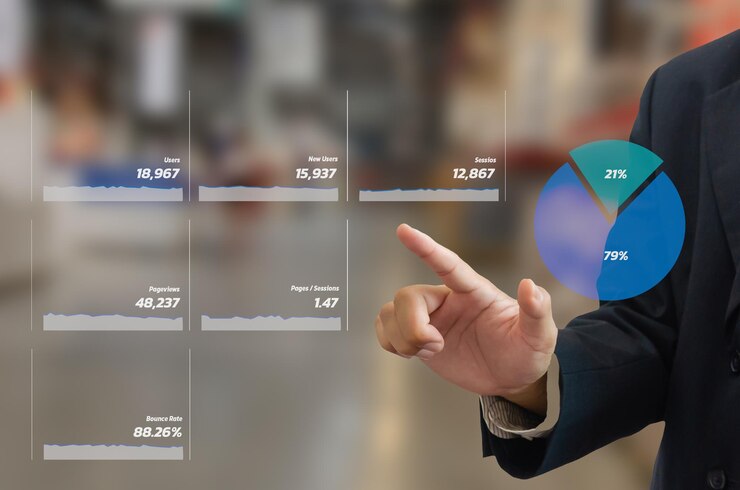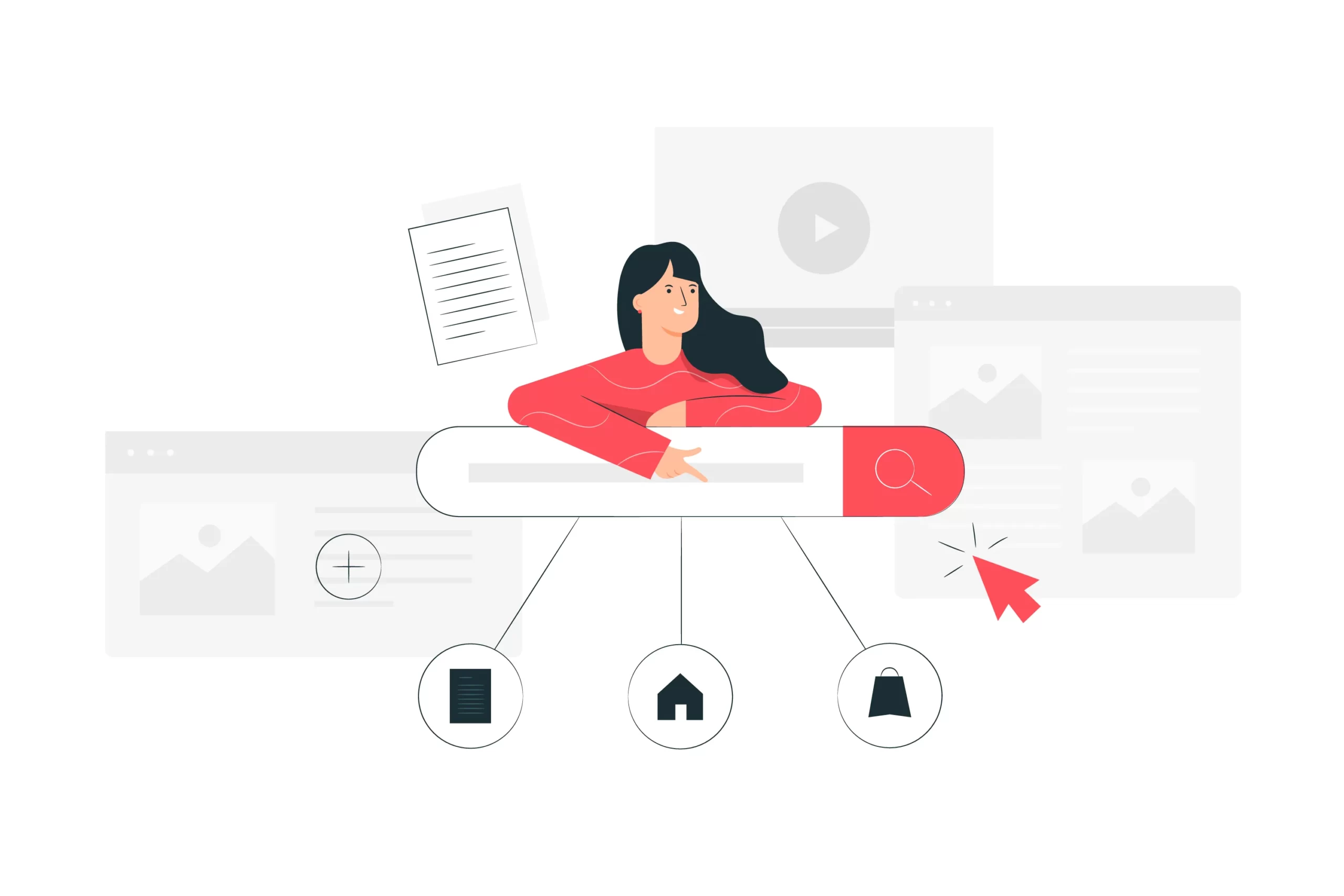Home
- Blogs
Why is the Bounce Rate High? What it Says about your Website Performance?


I hope you enjoy reading this blog
If you need a one-to-one free consultation, contact us now click here
In today’s digital age, your website remains one of the most important assets for business growth. However, not all websites are created equal. They can be an investment that has a calculable return, or a complete waste of money with recurring charges. “Why is the bounce rate high?” is one of the most important questions to ask when evaluating the efficiency of your website.
What is a Bounce Rate?
Many website owners and content marketers find the term “bounce rate” a little confusing, and a bit hard to decode as a crucial metric that reflects website performance, and overall digital customer experience.
In simple terms, the bounce rate of your website is the percentage of visitors who land on your website, and then decide to leave without clicking on any other link.
In most cases, a high bounce rate negatively impacts your website performance. It also indicates that the content and structure of your website are not interesting enough to keep your visitors around.
Therefore, keeping the following key website statistics in mind can make the difference between customers leaving your website, or driving up to 700% more leads than other websites:
- You have 0-8 seconds to make a compelling impression by using an engaging headline and landing page. After 8 seconds, the majority of website visitors leave.
- 96% of your website visitors are not ready to buy or have not made up their minds about buying.
- Uploading product videos can increase purchases by up to 144%.
- Every 1-second delay in page loading time decreases customer satisfaction by 16%, page views by 11%, and conversion rates by 7%.
- 46% of internet users don’t revisit poorly performing websites.
- 74% of users on mobile devices would leave a website if it takes more than 5 seconds to load.
How to Find Bounce Rate in Google Analytics?
In Google Analytics, a bounce is defined as a single-page session. It takes place when a user lands on a website page and exists without initiating another request to the Google Analytics server.
You can find the bounce rate metric in Google Analytics, in reports that show a data table such as reports found in the Acquisition, Behavior, and Conversion tabs.
To find the bounce rate for individual web pages in Google Analytics, you can search by page names such as cart or pricing.
Also, you can use advanced search to display specific search results by adding inclusions, exclusions, or dimensions and metrics to the search.
What is the Difference between Bounce Rate and Exit Rate?
Although people often get confused with the two metrics, it’s crucial to understand that there is a major difference between bounce rate and exit rate.
Both metrics report on when and where visitors leave your website.
However, the difference between the two metrics lies in the fact that bounce rate only reports the event of single-page visits or sessions.
If a visitor opens your homepage, takes a look around, and doesn’t interact in any meaningful way then exists, a bounce is reported.
While the exit rate shows people who simply quit a webpage, those visitors may have already visited other pages on your site but, it doesn’t report on that.
This means, that if a user lands on your homepage, then navigates to other pages on your website then exists, an exit is reported.
Why Having a Low Bounce Rate is Good for your Website?
The bounce rate of your website directly impacts your SEO rankings, user engagement, and conversion rate. Therefore, striving toward achieving a low bounce rate has several advantages including:
1. Better User-engagement
Having a low bounce rate usually indicates that your website visitors are not exiting after viewing only one page. They are navigating to other pages and clicking on internal links to read more posts and pages.
This translates into better user engagement. In digital marketing, improved user-engagement increases customer loyalty, page views, conversions, and ultimately profits.
2. Improved Search Engine Optimization (SEO)
Another key advantage to having a low bounce rate is that it improves your website SEO. As search engines continue to enhance their algorithms, they tend to focus more on user engagement as a search engine ranking factor.
Generally speaking, if a search engine thinks your website is adding value to its target audience, it rewards it by ranking it higher on the search engine results pages (SERPs), so more users can find this valuable content.
This is why social signals and backlinks are becoming more important ranking factors, and keyword optimization is increasingly falling behind as a valuable ranking factor.
On the other hand, a high bounce rate sends a negative signal to search engines. It shows website visitors didn’t find the overall content, and user experience engaging enough to click on other internal links. In this case, they tend to penalize your website by downgrading it in the SERPs.
What Contributes to a Low Bounce Rate?
In the previous section, we highlighted the major benefits of having a low bounce rate which positively impacts your website’s SEO, user engagement, and conversion rate.
The following are a number of strategies to help you reduce the bounce rate of your website:
1. Improve website loading speed
The attention span of the average internet user is getting even lower, and they don’t want to spend an extra minute waiting for information to load. Plus, a slow-loading website prevents users to browse other web pages.
Therefore, the more visitors quit your website due to slow loading speed, the higher your bounce rate will be. Moreover, website loading speed is an important search engine ranking factor, this means your website’s slow loading speed is negatively impacting your website’s SEO.
2. Craft better headlines
Well-written, engaging and helpful headlines grab the attention of your visitors, and encourage them to click on more blog posts, and browse more content on your website. This leads to better user engagement, and eventually lowers your website bounce rate.
3. Avoid clickbait tactics at all costs
After being exposed to a great deal of clickbait content over the years, internet users now have a great eye that filters valuable and helpful content, from clickbait articles that lead to some of the worst websites on the internet.
In order to improve your website bounce rate, avoid clickbait articles filled with annoying pop-ups and hidden ads. Instead, focus on writing headlines that match users’ search intent, and overall helpful and engaging content.
4. Avoid using excessive pop-ups
Welcoming your website visitors with annoying and intrusive pop-ups, that include unknown sign-up forms, and irrelevant banners and ads is the number one reason behind having a high bounce rate.
Even if you want to invite your visitors to subscribe to your email newsletter, avoid using pop-up messages. Instead build your email marketing strategy around content upgrades, sidebar widgets, and exit-intent pop-ups.
This will help you not only get more email subscribers but, also improve your user engagement, conversion rate, and subsequently lower your website bounce rate.
5. Welcome users with a clear message
It’s crucial to understand that your website only has a few seconds to make an impression on internet users. This is why it’s key to greet your website visitors with a clear message, headline, design, and call to action.
Meeting your visitors’ expectations, and delivering on your marketing promises, holds your users’ attention and improves their engagement rate. This, in turn, improves your bounce rate.
In order to create an interesting and engaging message, you will need to focus on creating the following:
- A well-crafted and smart headline to attract your readers.
- A clean, simple, and user-friendly website design that doesn’t distract your visitors from taking the desired action.
- A clear, and direct call to action that matches the needs of your website’s target audience.
6. Develop an internal linking strategy
Utilizing internal links, on your website, is a great marketing tactic to improve your SEO. In addition to that, it keeps visitors on your website for a longer period of time, which improves your bounce rate.
To get the maximum benefit, you should focus on creating internal links to relevant articles that visitors would find useful. Also, track those links to analyze their performance.
7. Appropriate Formatting
Your website design, readability, and formatting of content are directly proportional to visitors’ attention span. Therefore, avoid creating a huge bulk of text that is difficult to read.
Instead, use shorter paragraphs and sentences to improve readability. Also, utilizing headings, sub-headings, bullet points, images, videos, highlighted text, and other interactive elements makes your content more engaging and easily readable.
Wrap it Up
The bounce rate of your website can make the difference between having a deserted digital island, and turning your website into a money-making machine.
By focusing on outstanding usability, flawless functionality, appealing design, smart layout, engaging content, search engine optimization (SEO), and social media integration; you can guarantee a lower bounce rate.
Furthermore, you can ensure improved user engagement and overall digital customer experience.
You can take the first step in developing a functional, user-friendly, and engaging website by getting in touch with us.


